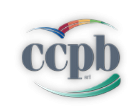GLOBAL GAP
- What is GLOBALGAP ?
- Scope Of GLOBALGAP (EUREPGAP) ?
- Application
- Compatibility Levels
- Why GLOBALGAP ?
- Why Certification Of Quality Management System In Accordance With ISO 9001:2000 Is Applied For?
- What Is ISO 14000
- What Is ISO 22000
- Know What You Eat: IMC/CCPB Certification For Food Quality
- Certification Process
GLOBALGAP (EUREPGAP) ; It is an initiative that big European retailers and supermarkets introduced together to make sure the agricultural products they shelve are safe and not harmful to human health. At the present day, it has become a standard which is authoritative all over the world.
EUREPGAP Secretariat changed its name and logo to GLOBALGAP on September 7, 2007 in Bangkok, for it became a global authoritative certification standard in agricultural production all over the world.

IMC has been authorized for operations in Turkiye by German institution FoodPlus Gmbh, which administers the standard on an international level, to provide the certification service in accordance with the GLOBALGAP Standard.
1. Vegetal Production
– Fruits and vegetables
– Soft commodities
– Flowers and ornamental plants
– Mixed plants
– Green tea and coffee
– Cotton
2. Animal Production
– Great cattle
– Small cattle
– Milk production
– Poultry
– Others
3. Fishery Products
– Salmon
– Crayfish
– Cichlidae family
4 . Production Material
– Seedling
– Seed
5. Feed plants
ADVANTAGES;
Applying good agricultural applications helps decreasing risk in agricultural production. GLOBALGAP provides tools to objectively authenticate the best international applications in a sytematic and consistent way. It becomes possible to come to this conclusion by applying critical points and compliance criteria.
It doesn’t contain chemical, microbiologic and physical remains harmful to human health,
– It is produced without polluting the environment and harming natural balance,
– It doesn’t affect the well being of people concerned with the production or of other organisms adversely while production,
– It predicates that transactions, which are in accordance with agricultural laws and regulations of the country the consumers are in and of the country the product is grown in, was done while production,
– It is an important facility for producers who want to take their places in overseas market,,
– It is a standard which is easy to apply, doesn’t place great strains on the producer, and increases the value, quality, reliability, hygenic standard and priority of the good produced.
Starting GlobalG.A.P.;
– Producer and/or Producer Group application;
– Signing a contract and number assignment;
– Planning and realization of internal audit;
– Control planning and determining the time of it;
– Control
There are 49 major and 99 minor control points in GLOBALGAP standard. Individual producer and producer group must be in 100% accordance with the major control points and in 95% accordance with the minor ones.
Major Musts ( Mutlak Zorunlu): % 100 accordance required.
Minor Musts (Zorunlu):% 95 accordance required.
– It depends on application of all requirements stated in the document of General Rules by the producer/producer group for the certificate to be given.
– GLOBALGAP certificate is given for one year (12 months) depending on the field of activity defined.
See www.globalgap.org for more information about GLOBALGAP standards and for following documents:
(1) GLOBALGAP Collateral-permission and certification agreement
(2) GLOBALGAP Reproduction Material General Arrangements
(3) GLOBALGAP Critical points and compliance criteria
(4) GLOBALGAP Control List products.
– Outspreading rapidly all over the world, GLOBALGAP, which producers who want to put their products into use in overseas market should take into consideration at the present day, and which big European markets ask as a prerequisite with each passing day, is much more a flexible method of production than organic agriculture in terms of the chemicals and fertilizers used.
Because an organisation that has ISO 9001:2000 certificate can do the following:
– Apply a management system that will help improve its own performance decisively;
– Acquire an internationally known quality management system for the clients of applicant firm;
– Meet the minimum requirements to get into certain markets (some offers and agreements are reserved for firms that have ISO 9001:2000 certificate);
– Be able to lower the expenses and losses which low level quality management system is the cause of;
– Be able to improve unity impression.
ISO 14000 is a norm for environmental management system certification and a tool that provide continuation of the firm, its field of production and environmental affairs around it in the safest course by a good policy.
It relies on reducing pollution by controlling factors effecting the environment caused by the firm’s own services, products and activities.
ISO 14001 doesn’t determine the level of area performance which the firm is required to carry out; although it’s basically required in advance in light of laws concerning the environment, all firms can apply environmental management system, without considering the level of environmental pollution formed previously. The firm must pledge to perform initial environment analysis in a way of specifying important environmental effects and their actual status while certification is being conceded.
Having ISO 14001 certificate reaps the following benefits both in and out of the firm by the same tokens:
– The firm’s value increases;
– The firm’s environmental expenses become known by spending less by energy savings and the firm derives benefit as a result of the environmental investment it has made;
– Everybody working for the firm takes part actively;
– Relations with regional and local communities get promoted;
– The juncture of having ISO 14001 system collectively or as a touristic area may stimulate tourism.
Firms intending to develop environmental management system certification and ISO 14001 have to be controlled and certificated by an accredited institution of certification that run independently and in accordance with ISO 65 (EN 45011) Standards, in order to be able to use relevant marks on their labels.
As mentioned above, the status required in advance for entrance to certification system is legal conformity.Preparation of top level environmental policy documents and environmental management quality handbook, subsequently, reassessment of the system by the administration and certification of third parties alternates performance of inital stage environment analysis which is the first step.Perpetual development and updating of the system by the institute of certification brings up the rear.
Nothing Found..!!
It is obvious that outdoor food consumption has rapidly increased lately. Restaurant culture has been a need in a wide range of occasions in modern life, right along with traditional taste. While performing the role to serve for our occupation or contentment, the need for the information and quality of offered food’s being made certain has increased. Each of us can directly consider the “restaurant’s kitchen” good, the “restaurant ambience” nice and spacious, and the “service” satisfactory or not.
But these subjects are usually concerned about by restaurant owners and consumers: “How can we make sure the food we’re consuming are not frozen but fresh?; How can we find out that these products are really special as stated?; How can we see that these products are products of organic agriculte?; How can we make sure these products don’t include GMO?; How can we make sure hygenic methods for sanitary conditions are applied professionally and skillfully?”
An independent institute of certification helps consumers in this suspence feel safe, and restaurant owners prove that quality products are offered and rules for hygen are complied with.
The project, which is devised by IMC for certifications of quality restaurants, is given the name “know what you eat”.
Certification program can be applied by restaurants where eating and drinking activities take place, cafés, ice cream shops, wine houses, farms, canteens etc.
The devising defines the following quality needs required for certification:
Enterprises concordant to the arrangement can get involved in the certification process by applying to IMC.
The usage of the mark and the certificate is guaranteed as a result of strict inspection and assessment activities of the following subjects by an expert whom IMC has authorized.
• Adoption of making top level safety certain for clients by management rules for adequate hygen conditions and education of personnel;
• Prohibiting usage of food containing GMO (Genetically modified organism);
• Making the food suppliers be qualified;
• It is ranged according to the quality certified products as organic, typical products, geopraphical products, moreover it is given one, two, three butterfly.
Prescribed control and certification requirements are implemented in accordance with prosedures documented by Mediterranean Certification Institute and approved by the IIMC/CCPB board of directors.
The process provided for certification is as follows;
Presentation of information request: The form given by IMC/CCPB is asked to be filled in order to acquire information. After the form is taken back filled, IMC/CCPB nominates an expert to make a preliminary visit for applicability of the system and process information.
Presentation of Certification Application: After gaining sufficient information about the certification system process and deciding to apply for certification, the entrepreneur fills an application form and sends it to IMC/CCPB.
Initial stage of the control system: After taking the application form back, IMC/CCPBsends an authorized supervisor for the initial stage visit to make assessment according to the arrangement guide. The results of the observation are reassessed byIMC/CCPBCertification Committee who is the one to decide whether the certification is to be published or not. If the result of the assessment is given countdown to, the entrepreneur may use the allowed certification,IMC/CCPB mark and conformation signs.
Certification
Certification is publication of conformation certificate of classification of arrangement and application, according to the quantity of the quality certificated food the entrepreneur offers, as one, two and three butterflies. The certificate states the quality certificated food used by listing in attachment. (such as; organic products, origin protected products, geographic signed products, traditional products etc.)
Would you like to join “Know What You Eat” restaurant certification chain?
Please send the application form back to us properly, after downloading it from our website or requesting it from our main office and filling it, to join the IMC/CCPB Quality Restaurants control system. Request all necessary information and documents related with “Know What You Eat” control system from IMC/CCPB with the request form you filled. While filling the form, the information about the person in charge will also be requested as well as the information about the enterprise. These information will licitly be kept and shared, within the person’s consent. Concurrently, the terms of contract, which involve your rights and responsibilities, will also be declared to you, if you join the system.


